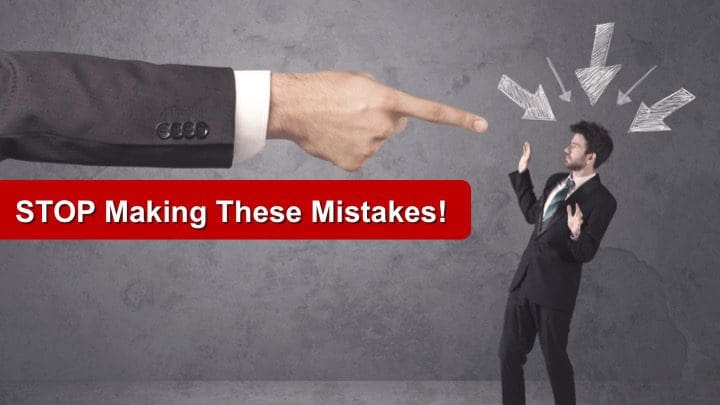Are You Making These 2 Referral Mistakes?

I’ll be the first person to tell you that there is no one right way to make a request for referrals and introductions. At my live presentations, every time I make a blanket statement about the right or wrong way to do something, someone comes up after my talk and says, “You said not to ______. I’ve been doing that for 15 years and it still works.”
My response is simple, “Then keep doing it. If it’s legal, ethical, moral, and everyone wins, then keep on keeping on.” I mean, who am I to stop someone who is getting the results they want?
With that said, I feel pretty strongly about these two mistakes that I see people make all the time.
Please Don’t Make These 2 Mistakes When Asking for Referrals
Mistake #1 – Making the Request for Referrals All About You
Many folks in the insurance industry were taught to say, “There are two ways I get paid…” Then go on to tell their brand new prospect that they get paid through referrals – therefore – setting up the giving of referrals as an obligation in the relationship.
I’m not saying this doesn’t work from time to time, but if you do this too soon with someone you hardly know… as they say in Jersey… “Forget about it!”
In one of her studies, Julie Littlechild (Absolute Engagement) shows that 61 percent of people who give referrals do so to help a friend, colleague, or family member. 37 percent give referrals to help their advisor. So almost twice as many people provide referrals to help someone other than you!
Now… many of your clients are happy to help you as long as they believe in your value first. Once you get to know someone, it doesn’t hurt to ask for help… BUT you’re asking for help to bring your value (that they have experienced) to others.
Your request for referrals comes from your belief in the work that you do.
Mistake #2 – Being Way Too General in Your Request for Referrals
I’ve covered this in past blogs and will continue to cover this until the problem has been eradicated from this planet of ours. (Fat chance!)
Too many people ask for referrals by saying, “Who do you know who I/we can help?” They throw open the entire universe and the client draws a blank. “I can’t think of anyone right now.”
Think of your request for referrals as a target with concentric rings. Of course, you want to start with the Bullseye.
Bullseye – Specific people you know that your client (or Center of Influence) knows.
First Ring – Specific categories of people who are likely to fit your ideal client profile.
Second Ring – Lists, LinkedIn profiles, and directories of people related to your referral source.
Third Ring – Open-ended brainstorming to identify likely candidates that fit your desired profile.
Start narrow and expand from there. Most people start broad and if they don’t get anyone, they try to get narrow. It’s much easier and more effective to go in the other direction.



